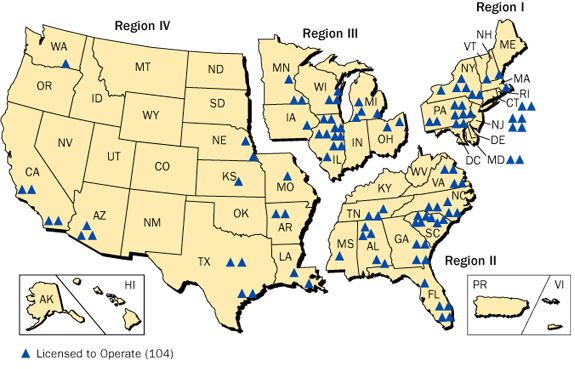
The ongoing crisis in Japan has heightened awareness of nuclear plant safety, preparedness and emergency response. In one news story after another, nuclear plant officials are being asked to detail their “worst case scenario” emergency procedures. In each of these “scenarios,” notifying emergency officials, employees and citizens is required by the federal government.
In a recent TV news story titled Calvert Cliffs Nuclear Plant Prepared in Case of Crisis, CodeRED is shown on a list as one of the strategic methods used to keep citizens and employees informed. Following are five key ways to use mass notification for nuclear power plant preparedness and emergency response:
Deliver Disaster Preparedness Information to Citizens
The use of a Mass Notification System (MNS) as a part of your annual Public Education and Awareness Program will prove to be one of the greatest technological assets you have. Periodic disaster preparedness information delivered to citizens residing in the 10 Mile EPZ (Emergency Planning Zone) can be specifically targeted. This will allow you the opportunity to let citizens know they are residing in one of the EPZs, make them aware of the location of evacuation shelters, and share information on how to shelter in place if advised to do so. This communication can also provide citizens with a sense of security that comes from knowing local Public Safety officials are prepared and have an individual concern for their well-being.
Provide Response Notification to Emergency Workers
During a nuclear incident, time is of the essence. You need the support of a reliable and rapid Mass Notification System to activate or alert your critical responders. This can be accomplished by pre-populating notification lists and individual response groups within your MNS for easy access in an emergency situation. Your statistics page will allow you to see who is able to respond, so you can make contingency plans for staffing. Testing these lists monthly will help ensure updates are being captured and awareness is high among your responders.
Deliver Protective Action Recommendations to the Public
The most effective form of emergency notification is the live voice of an authority figure delivered to a citizen’s telephone. Providing information to the public in response to an event is critical. In the case of a nuclear incident, it is equally important to provide continuous Protective Action Recommendations (PAR) during the recovery phase. A Mass Notification System will prove to be the best and most reliable form of targeted information delivery. It is possible that citizens will be sheltering inside their residences leaving phones, text and email messages and mass media as the most effective forms of message delivery.
By creating pre-established EPZs geographically within your MNS mapping component, you will have the option to send PARs to your entire evacuation area or to an individual EPZ as required. Again, through the use of your statistics page, you will be able to see who received the message and who did not, so you can plan for contingent route alerting. Adding text and/or email notifications can also be included in the process as additional communication methods. Periodic testing of your MNS will allow citizens to become accustom to this form of notification and encourage them to add additional contact devices to enhance your system database.
Work in Tandem with Alert and Warning Sirens
A Mass Notification System is the perfect compliment to any outdoor warning device. Sirens may be used for several different alert scenarios so the public will need to know why they are being alerted each time. Therefore, it is extremely important to provide simultaneous information when activating sirens. The most efficient way to do this is to follow the siren warning with a MNS call with the reassurance of a live voice providing the information citizens need to hear.
Siren testing is a requirement, particularly when they are installed for the purpose of warning in case of Nuclear Power Plant incidents. Your MNS should be used to announce siren testing in advance, as well as while the test is being conducted. Your citizens need to be accustomed to the fact that they will receive a voice message when sirens sound. It provides credibility for you and reassurance for them.
Meet and Exceed FEMA / NRC Redundancy Requirements
The addition of a Mass Notification System to alert the public will prove to be a favorable approach to satisfying the current FEMA evaluation requirements to employ multiple notification methods. Adding the use of a MNS to your Radiological Response Plan will significantly enhance your ability to reach a larger portion of the public with your critical message. Working in concert with the present Outdoor Warning Sirens, Route Alerting and Media Announcements, the added use of a MNS will provide a much needed level of credibility to the emergency message.
Used with permission by Emergency Communications Network

